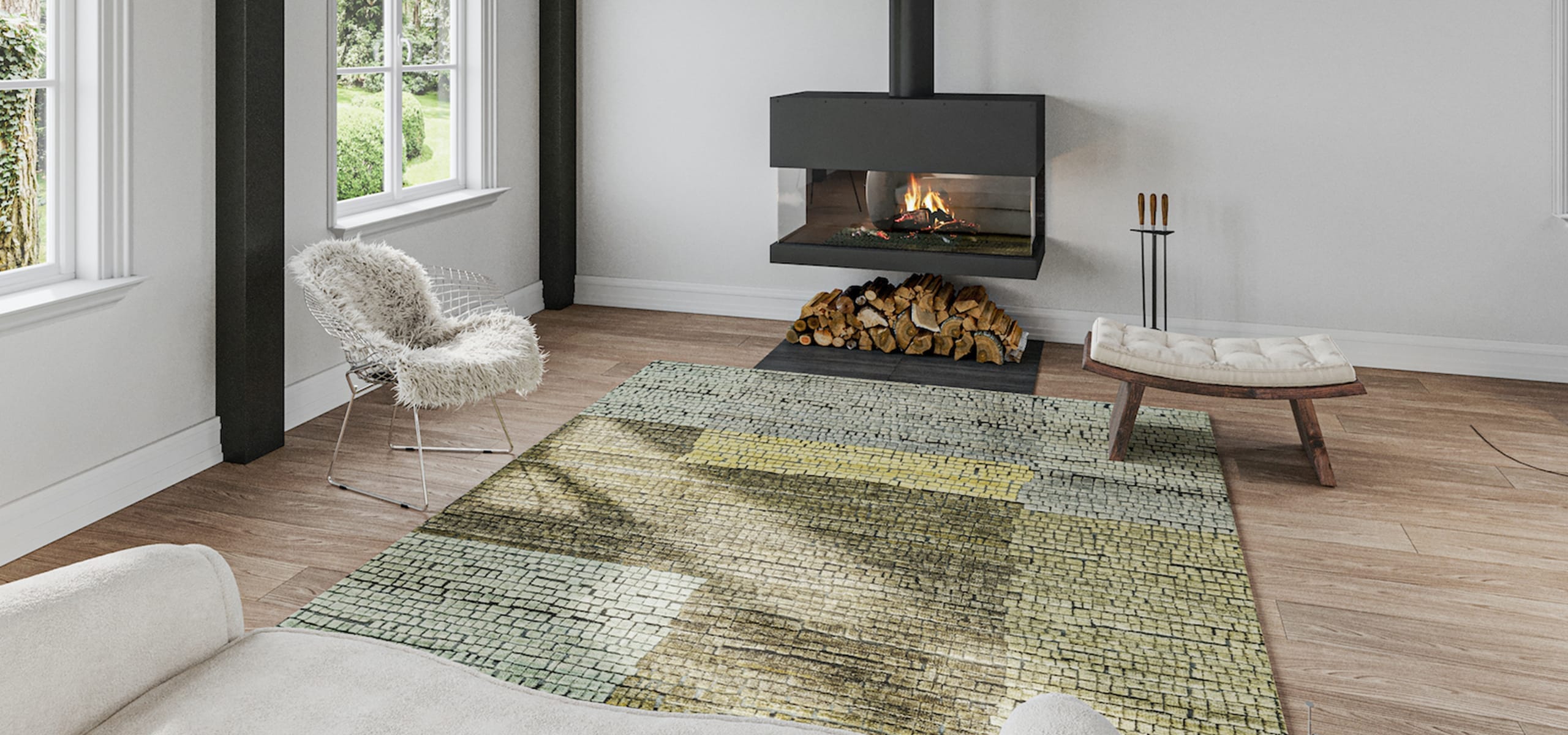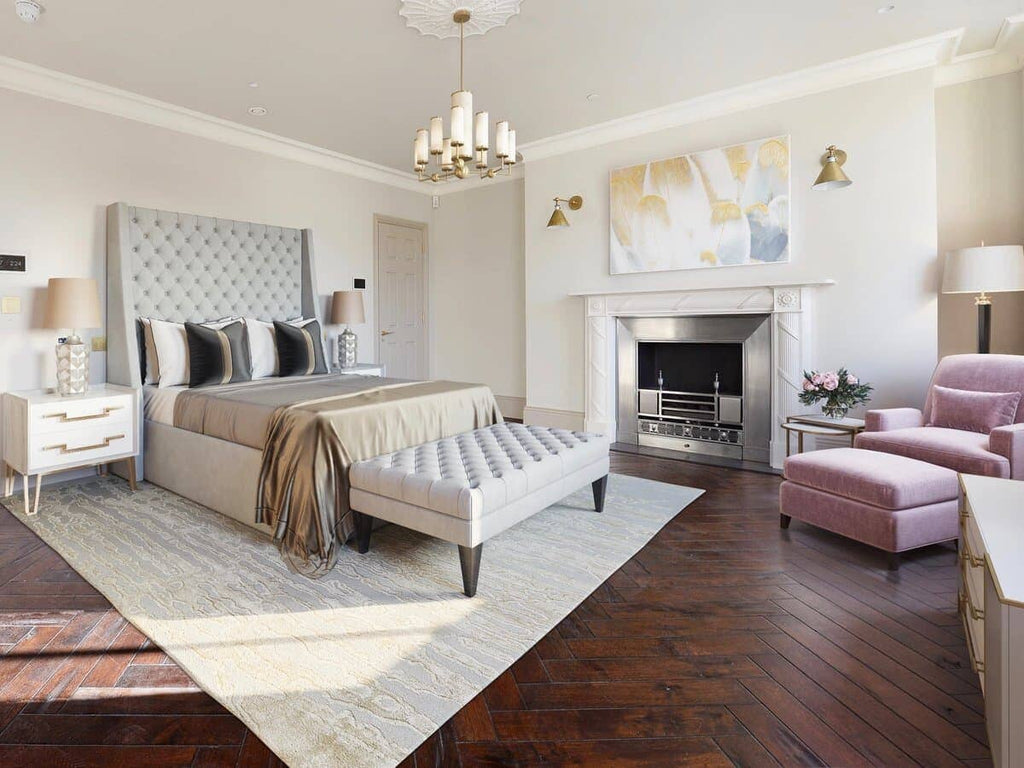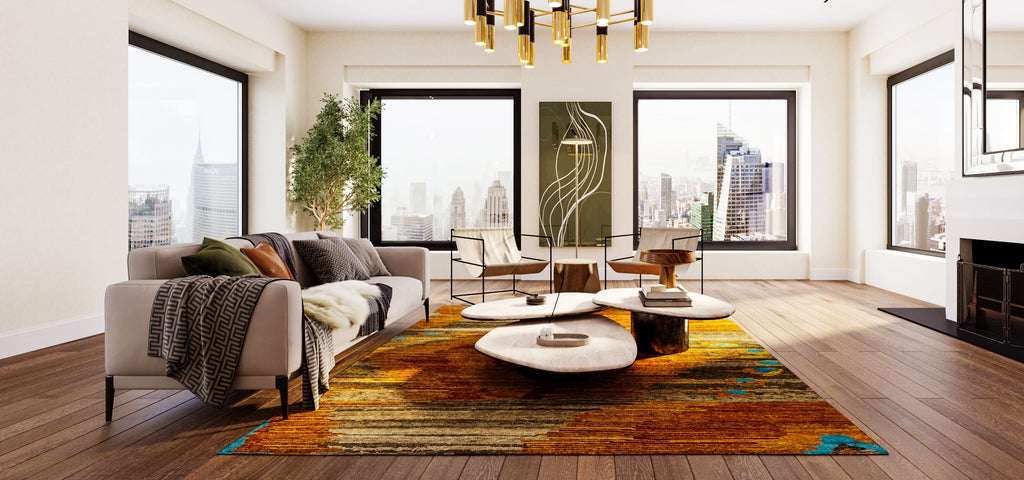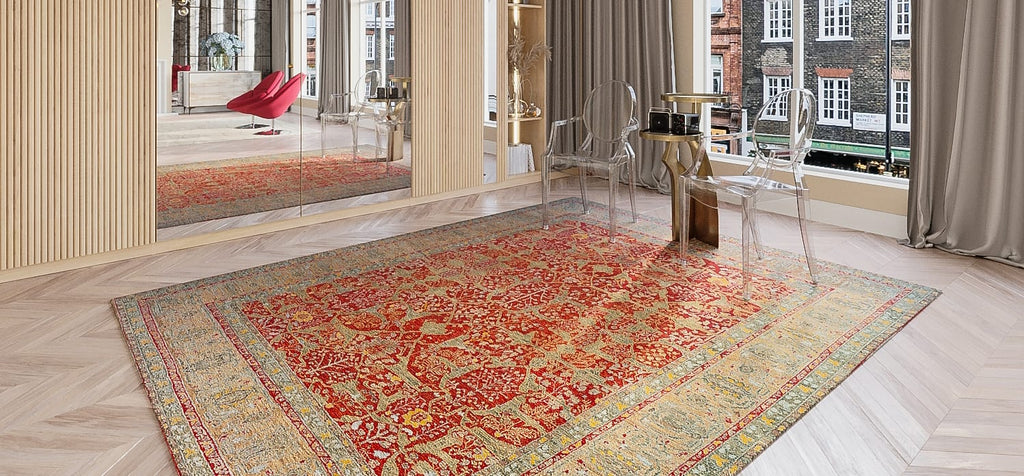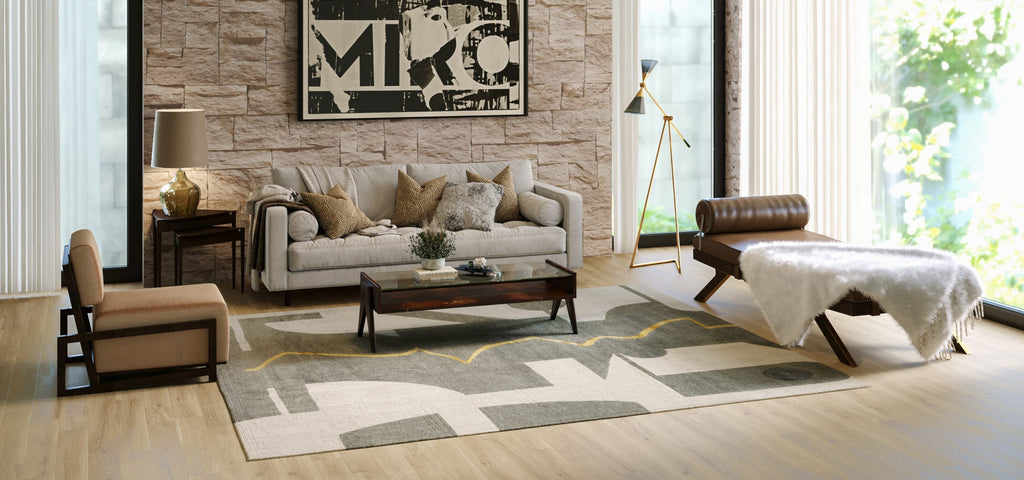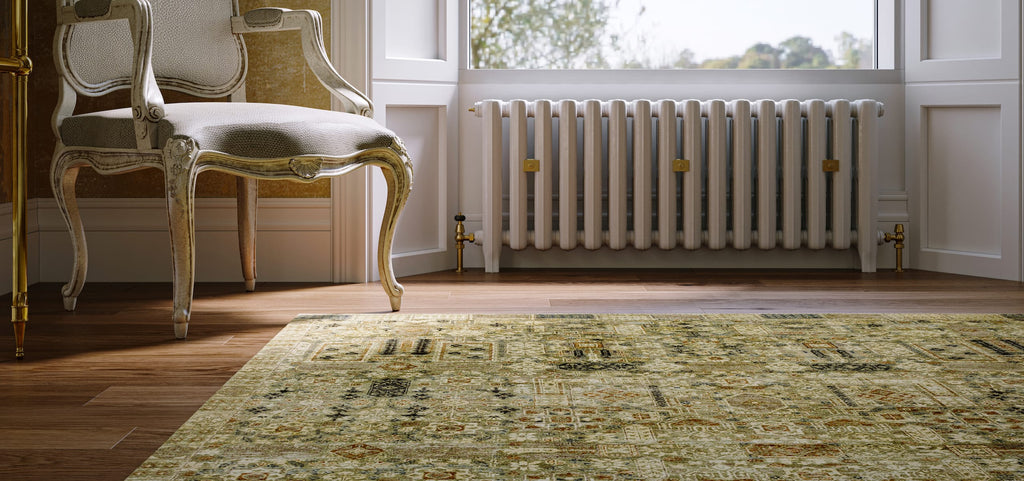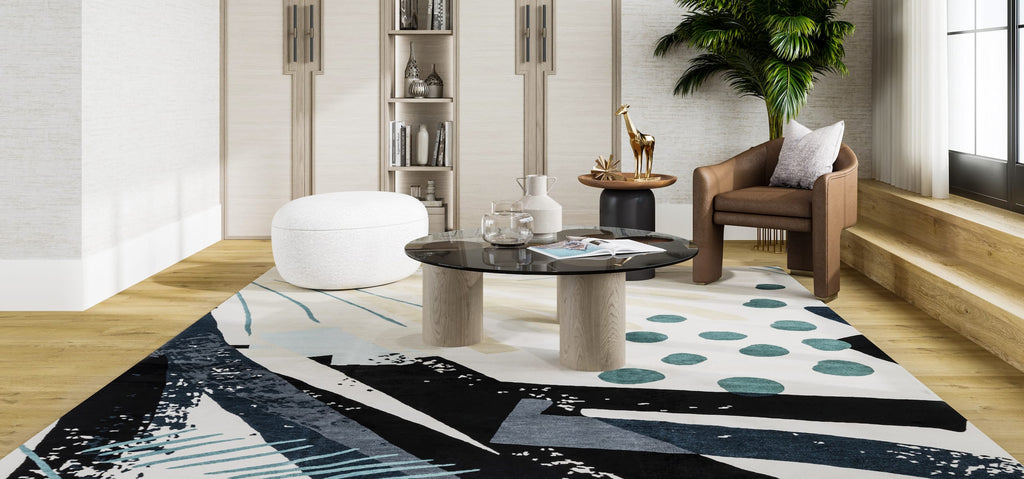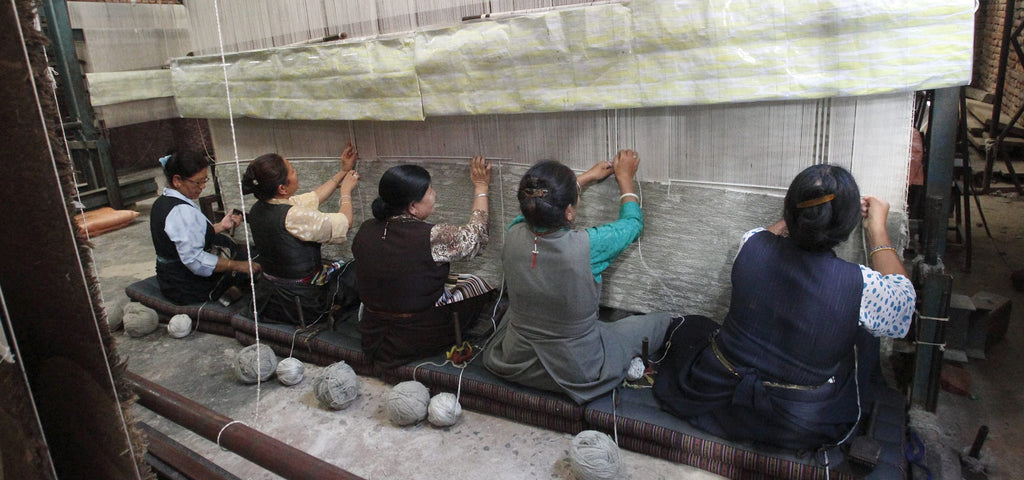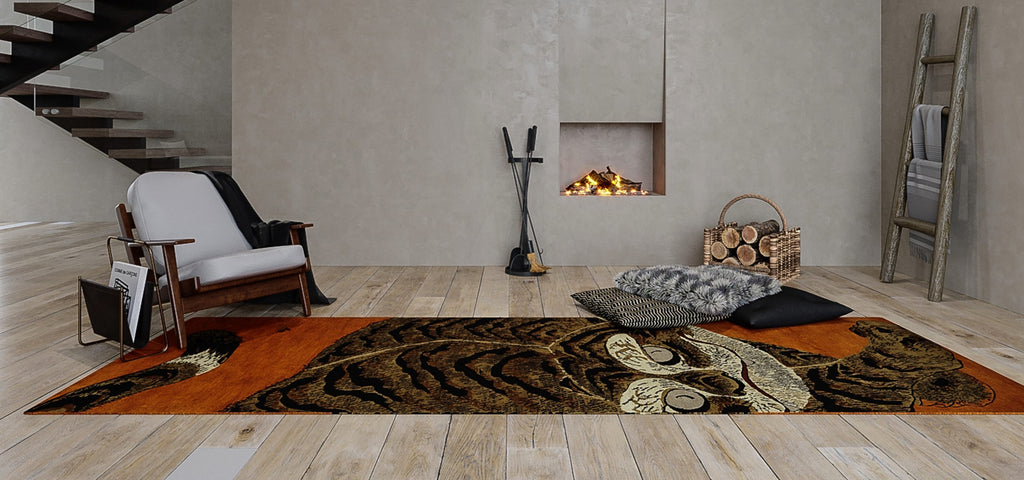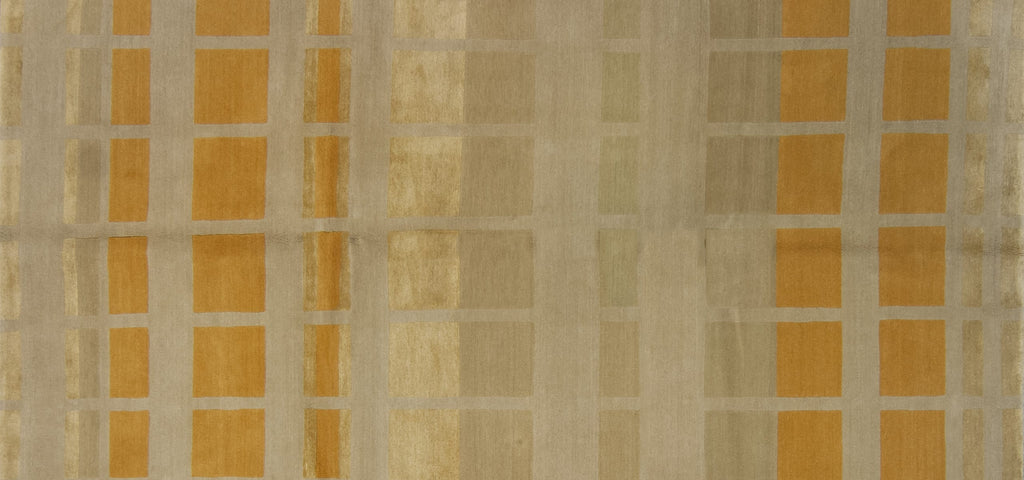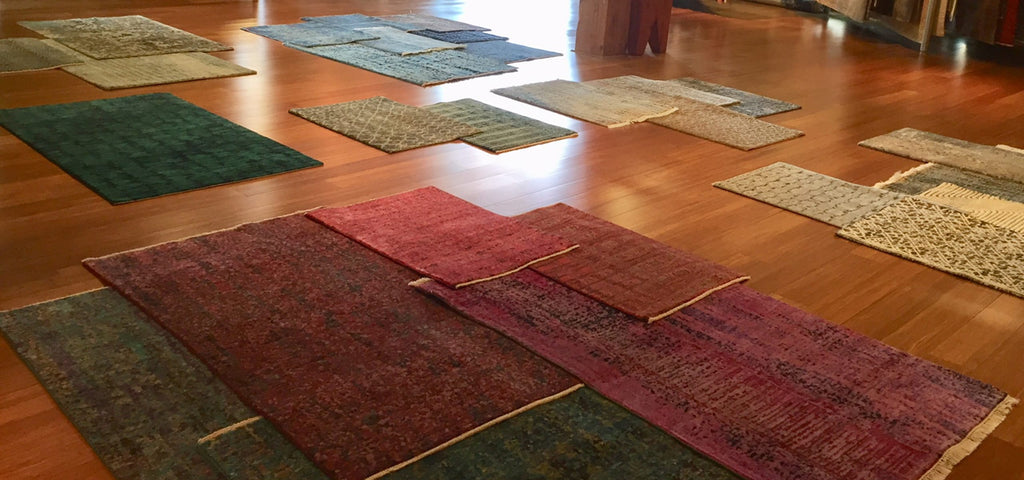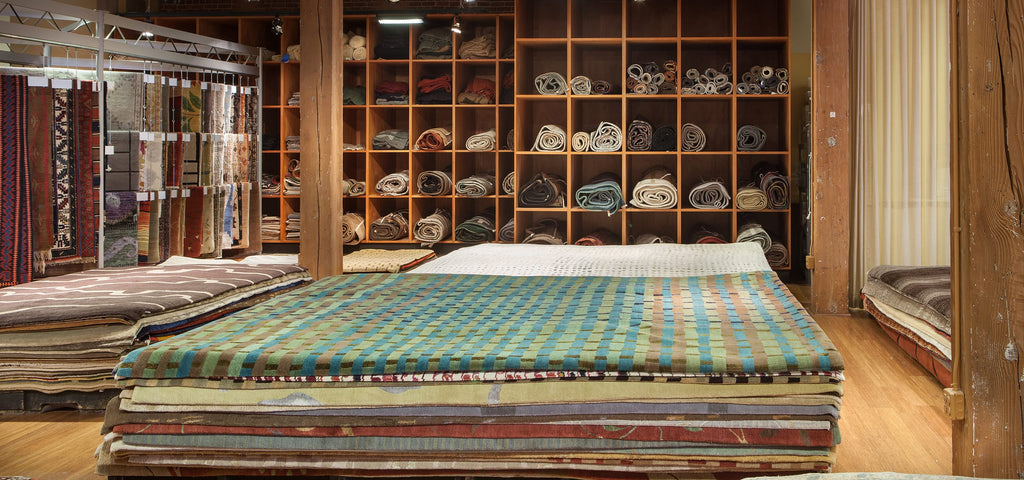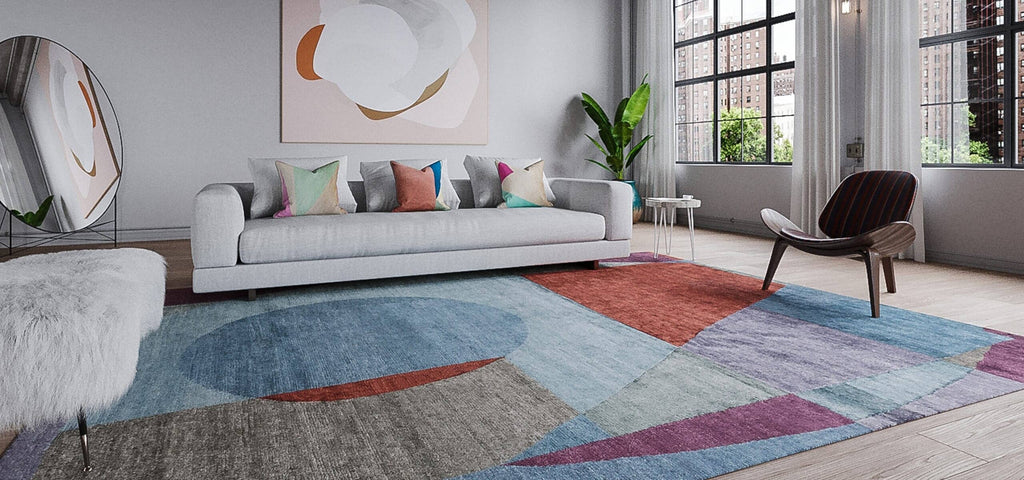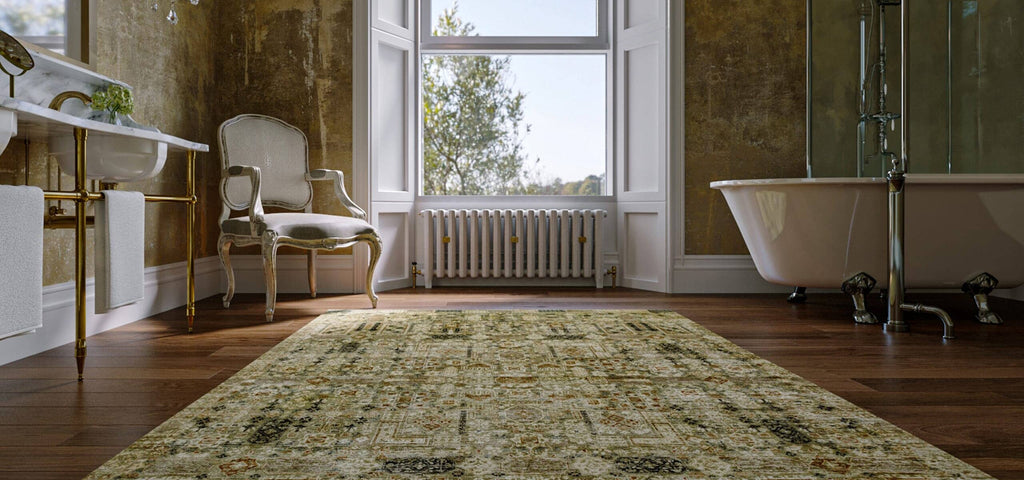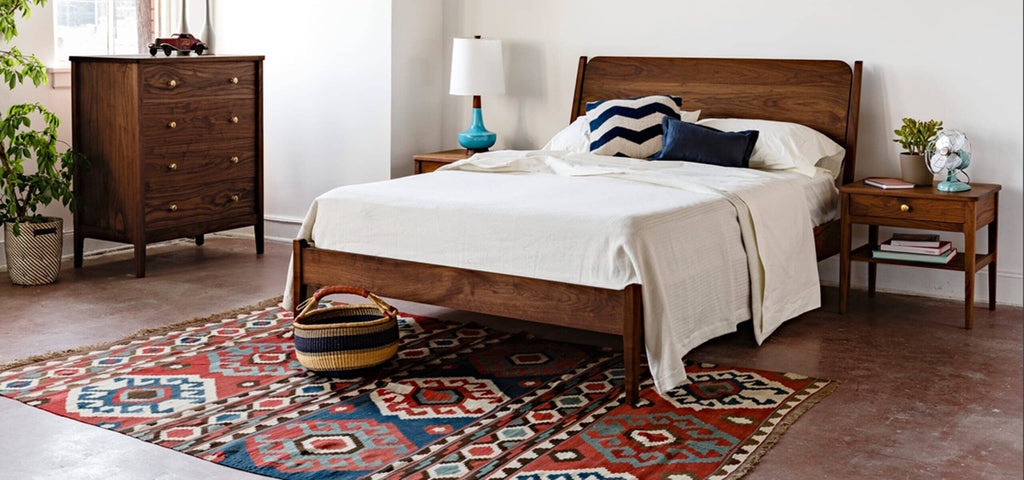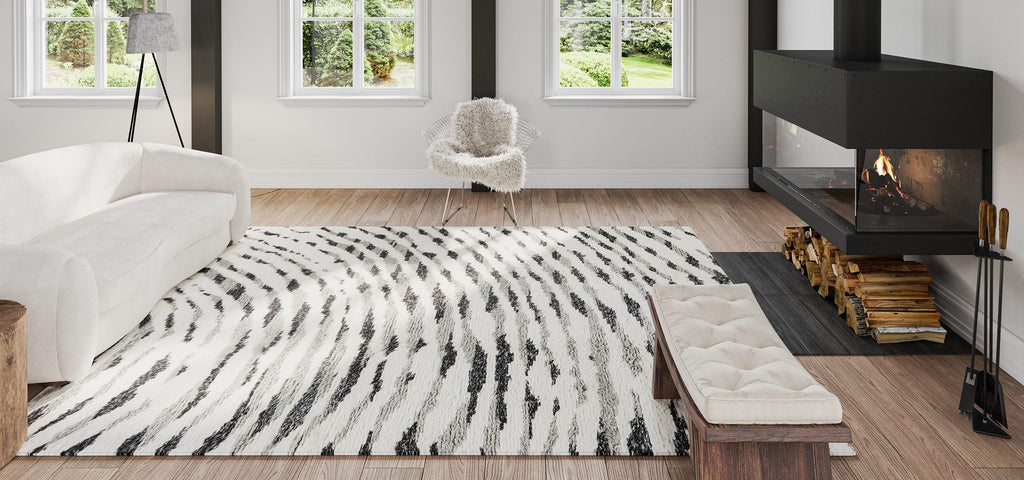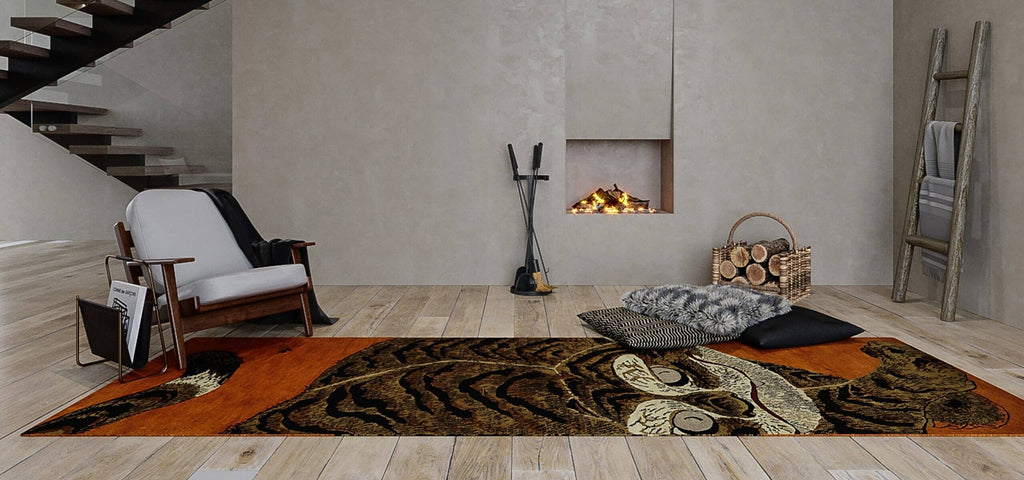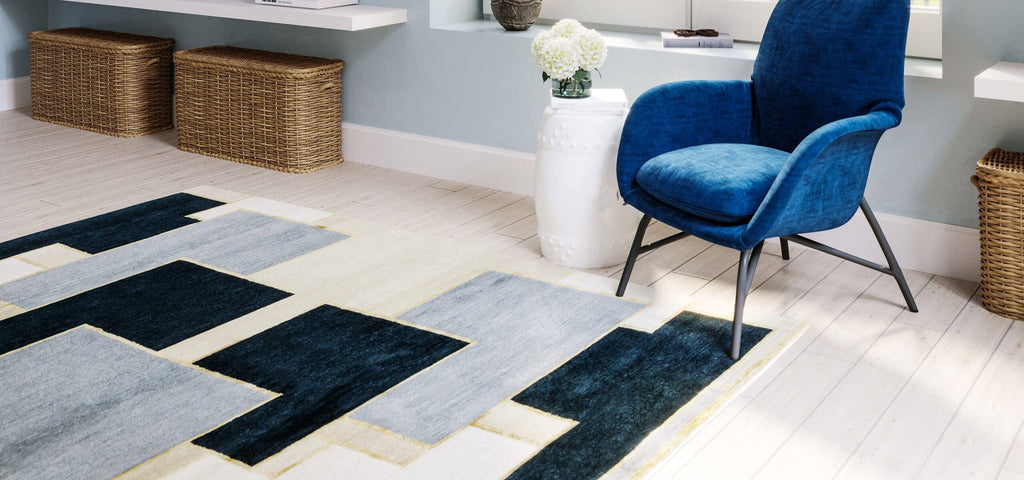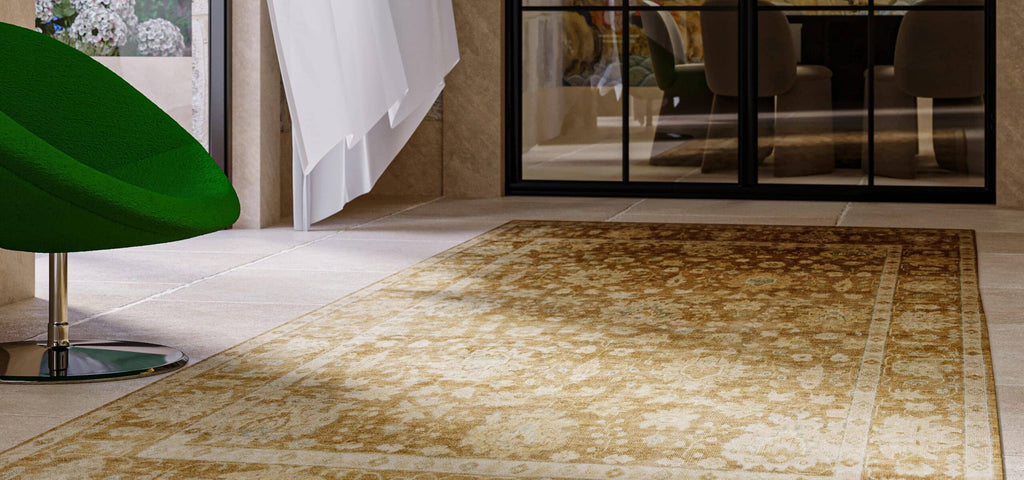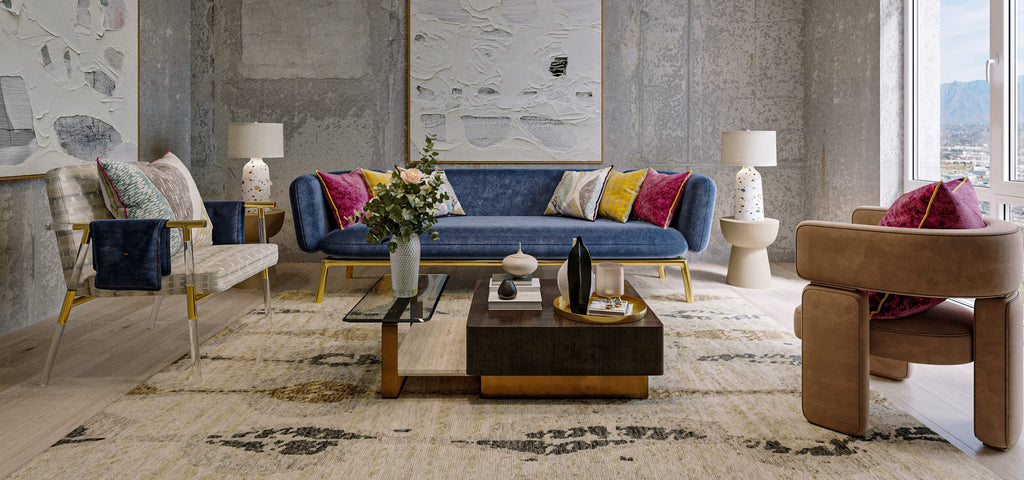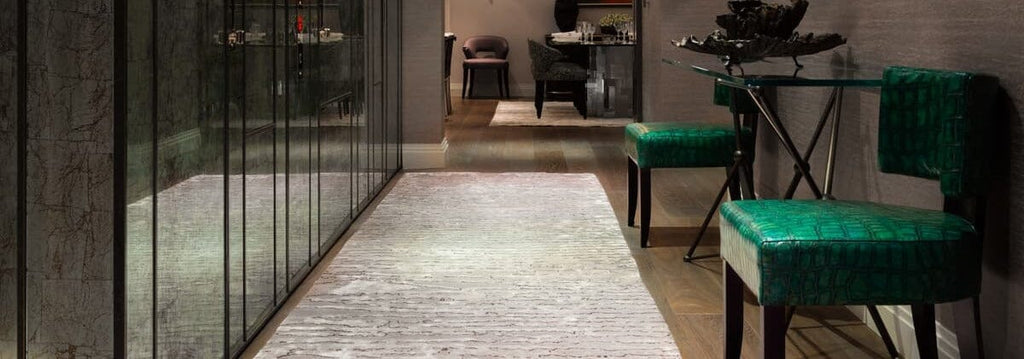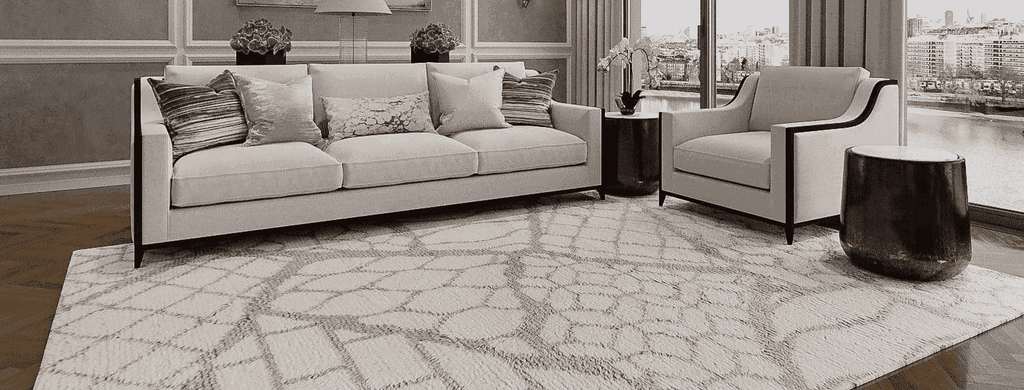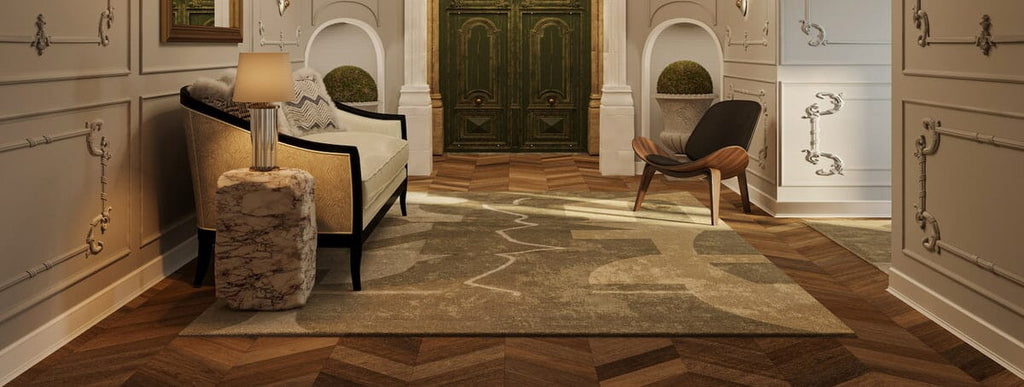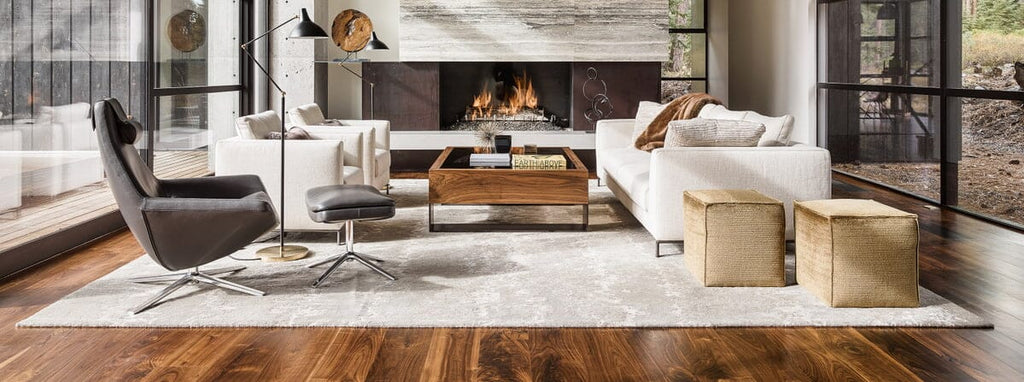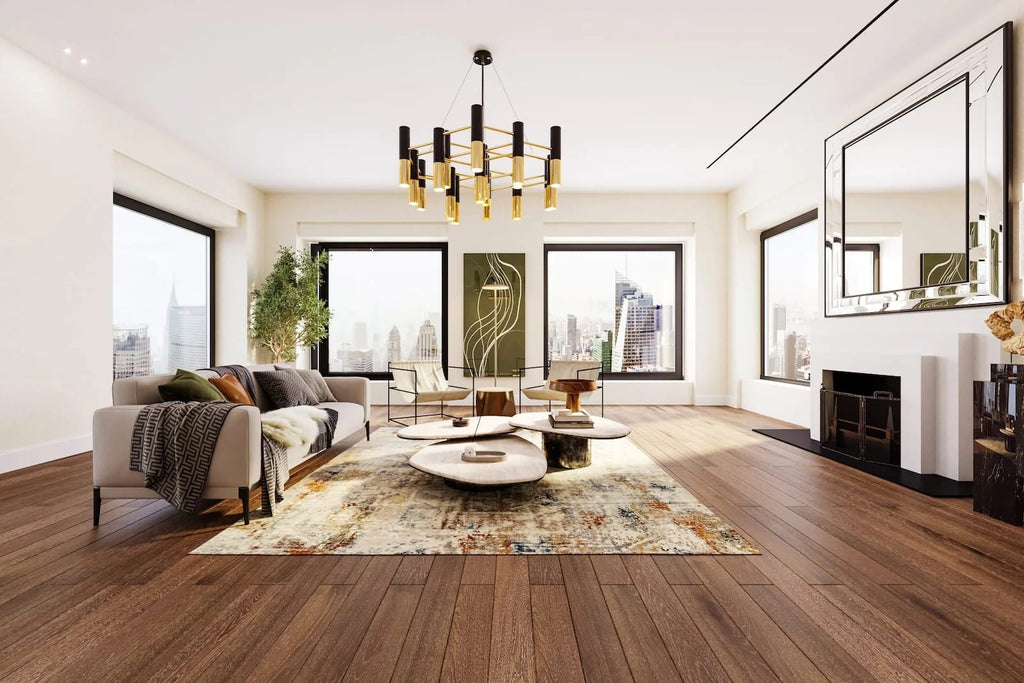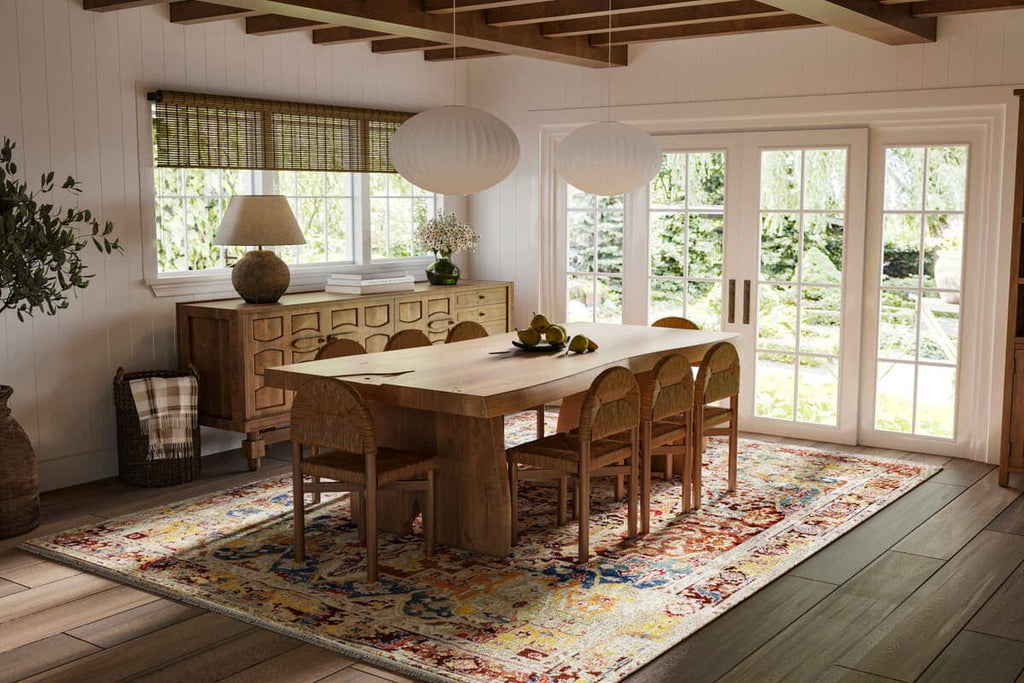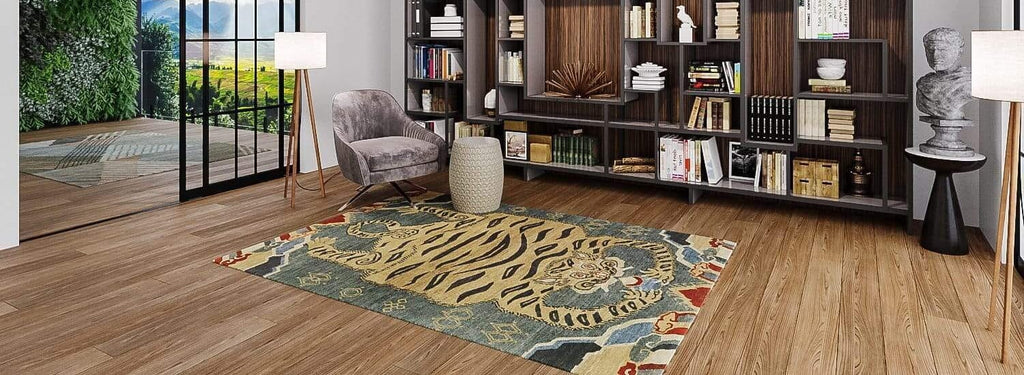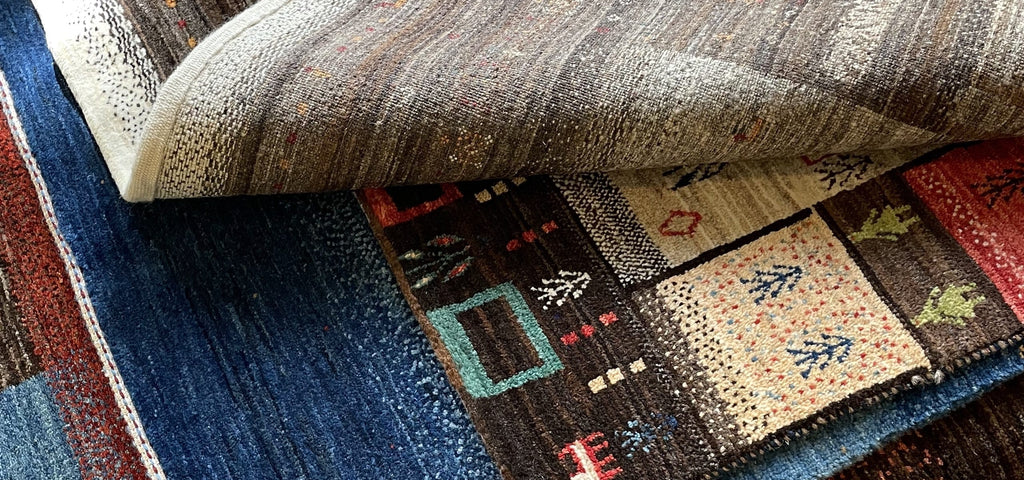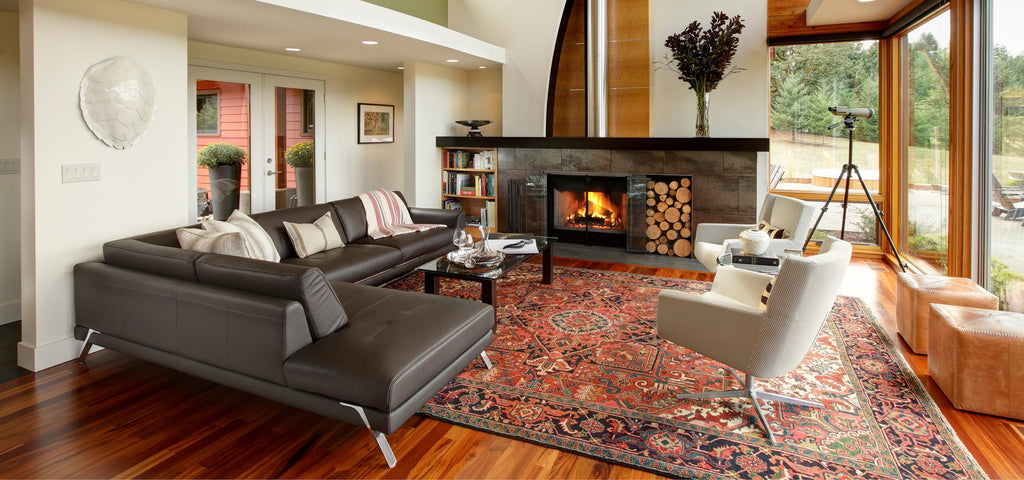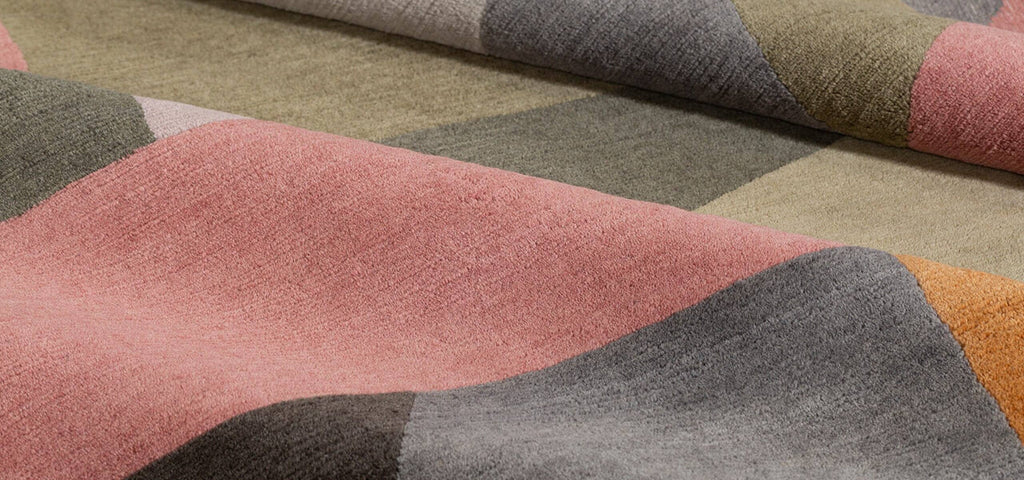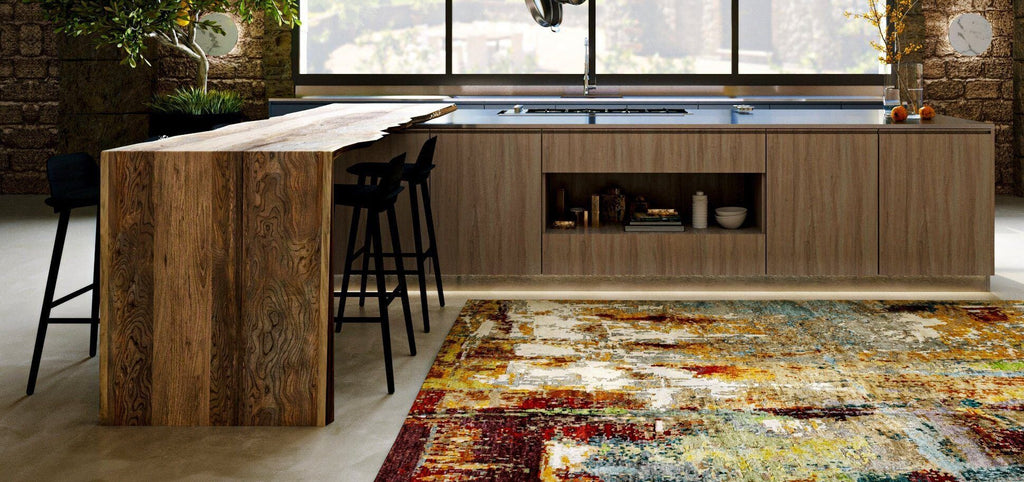A handcrafted Tufenkian rug is a beautiful addition to any space, but any type of carpet on hardwood floors takes a little extra care and intentionality when decorating your home. When you select the right area rug, your space can be taken to a new level of class and comfort. However, an area rug can become a tripping hazard or an eyesore if you don’t follow certain guidelines, which is why we’re here to help.
From best installation practices, to room prep, to selecting the best rug for your home, here are the best tips and tricks to use an area rug on hardwood floor spaces.
Designer Tips for Using Area Rugs on Hardwood Floors
Define your space
First of all, you need a certain style in mind for your rug that will help you define your space. Which room of the home are you decorating? Do you have a specific mood or tone you want to set? What other furniture or decor do you currently have in place that will coordinate with your new floor piece?
Hardwood floor area rug placement in a living room, for example, should consider the foot traffic in the room, the size of the room, and the mood you want to create for such a central space. Most people opt for a big fluffy rug that can protect the main furniture, such as a coffee table and additional seating. A home office, on the other hand, needs a much flatter rug that is thin enough to allow for easy movement of a chair. Keep in mind that your priorities will shift depending on the function of each space.
A rug also helps separate spaces in certain rooms that need designated areas for specific activities. If you have a spare room that functions as both a sitting room and an office, you may choose to use a large rug placed under your sitting furniture and a different rug beneath your desk. Most people put this rug trick into practice in a bathroom; because bathrooms are such small spaces to begin with, people often put a rug in front of the vanity and another in front of the shower to make the room appear larger and more impressive. This separation trick is especially useful for irregularly-shaped rooms.
Select the right size
Next, consider the size of the rug and how much it will either complement, overrun, or disproportionately affect a room and the hardwood floor. A rug that is too large for a room will make the space seem smaller than it actually is and covers up more of the floor than necessary. Go too small, and an area rug can make the room feel awkward and mismatched.
Here’s a pro tip: focus less on room size and more on furniture size and layout. Is there enough room that you can still see your beautiful wood flooring despite the furniture? Do you need a big, central rug that can comfortably hold the sitting furniture? To prioritize the safety of your flooring, you want to get a rug that can fit all of your furniture so that you don’t have a rogue chair leg scraping your hardwood floor.
Take a bedroom as an example; a large bed placed more or less in the middle of your room needs to have some excess rug space around the bed and extra space around the rug itself to reveal the floor. The size of the bed and layout of the room will impact the size of the rug you purchase more than the size of the room itself.
Go for functional & timeless
Choose a rug that is both functional and will withstand the test of time, meaning your rug needs to be high quality and adaptable to shifting design trends. The truth is, styles evolve every couple of years, and so do our personal styles—even if you don’t overhaul your entire living room, you may want to update the couch pillows, the paint, or the wall furnishings.
A high-quality rug will last a long time without damaging the wood flooring beneath it, which means despite a potentially significant upfront cost, it’s wise to buy the best quality you can afford. This means you want to have a rug that will age with you, your style, and your home. This shouldn’t necessarily deter you from selecting a bold pattern that you love—just be aware of trends versus styles you will love long-term.
Invest in a rug pad
No matter the kind of rug you buy, an essential step is getting yourself a high quality, non-slip rug pad. A rug pad will help keep your rug in place, and prevent dirt and dust from grinding under the rug and damaging the hardwood floor surface beneath. In addition, a rug laid over a pad will lie in place properly, with no wrinkles or buckles to avert the eye. Using a rug pad will make your whole room look more put together, but there are yet more benefits.
If children or people that may easily trip live in your home, a rug pad will keep the rug secure and offer greater safety for your family or housemates. It also prevents bacteria from building up, which can otherwise result in unpleasant odors and similar effects. A pad also adds more comfort and luxury to your home and can even help absorb sound, making your space a quiet sanctuary.
Now, we should mention here; not every rug pad is created equal. Avoid plastic or PVC padding, which not only wears out faster but can also damage or discolor your floor, too. Plus, a lot of plastic rug pads use too much adhesive to the point that it harms your floors or even sticks to itself, creating the rug lumps you were hoping to prevent in the first place.
Don’t bury, elevate
Make sure your rug enhances your space and does not completely hide your beautiful hardwood floors. You should leave at least several inches of the rug perimeter bare so that your hardwood floor can shine through.
The right rug placement on hardwood floors can help you add to your room instead of overwhelming it, and so can the rug's design. Matching the color palette and choosing a complementary pattern will bring out the best in your floor instead of overshadowing it. You want to create contrast and draw the eye with your rug, but a carefully selected rug will help remind people of the glaze and elegance of your glossy floors, too.
Consider light versus dark hardwood floors
The rug that you choose may also depend on the coloring of your floors. A surefire way to enhance your flooring with a rug is to know how to pair certain colors and offer enough distinction. The floors themselves will greatly determine the tone of the room—similar to cabinets in a kitchen, the wood flooring is going to be a standout feature.
However, a rug can either pull attention away from the floor, tone it down, offer more dramatic contrasts, etc. Some rugs are going to fit better with “warm and cozy” compared to “cool and modern,” and those moods may even change from room to room. The contrast will help the rug stand out while similar coloring is going to make the rug blend in flawlessly. The right rug can be a great combination with your floor coloring and help you elevate the atmosphere you’re trying to create.
Ultimately, your style will inform the rug you pair your floors with, and you may go against the grain to discover the most satisfying design for your home; however, here are the general guidelines people use for these color combinations.
Dark Flooring
Dark wood floors can be stunningly sleek and inviting, but they can also make a room feel colder, closed off, or stuffy. To add contrast, use lighter colors such as:Gray
White
Beige
Pastel yellow
Light blue
White with bolder colored accents, like red
Light Flooring
Light floors, much the opposite of their darker counterparts, are warm, inviting, and open up a space, though they lack that sleekness. If you want to ground the colors in your home and add a bit of maturity, explore and experiment with earthy colors such as:
Mossy or forest green
Pale orange
Burgundy or maroon
Brown
Red
Can Area Rugs Damage Hardwood Floors?
Area rugs can damage hardwood floors, especially if made with cheap materials. What’s even more important is how an area run on hardwood floors can actually protect the flooring underneath when those rugs are well-made, so if that’s part of the reason you want an area rug in your front room, make sure you invest in one that is made carefully. High-quality rugs are made of breathable materials that allow for more efficient air circulation, which helps the rug absorb the damage that the floors would otherwise take on.
Using a reliable non-slip rug pad isn’t just good for the look and function of your room, either. As briefly mentioned, rug pads act as a barrier between the floor and your rug, one that protects the floor from the rug itself when necessary. A rug pad will also help with that breathability you want in the rug itself and offer an extra layer of padding and protection. You want a rug pad made with felt or natural rubber, not plastic.
Always ensure that your floor is clean and sanitized before placing your rug down, but otherwise, a high-quality rug paired with a good rug pad is going to be one of the most effective ways to protect your floors.
Shop Custom Tufenkian Rugs for Your Hardwood Floors
Hardwood floor area rug placement is all about the right materials and the right design, a benefit which comes naturally with the purchase of a Tufenkian rug. Our rugs can also be customized to your exact specifications, creating the ideal rug to compliment your home. With a large variety of materials, patterns, design styles, sizes, and more, you don’t have to compromise on quality to find the perfect rug you love.
Protect your floors, elevate your home, and create a sanctuary with the perfect rug. Browse through Tufenkian’s beautiful rug collections to get inspired!

